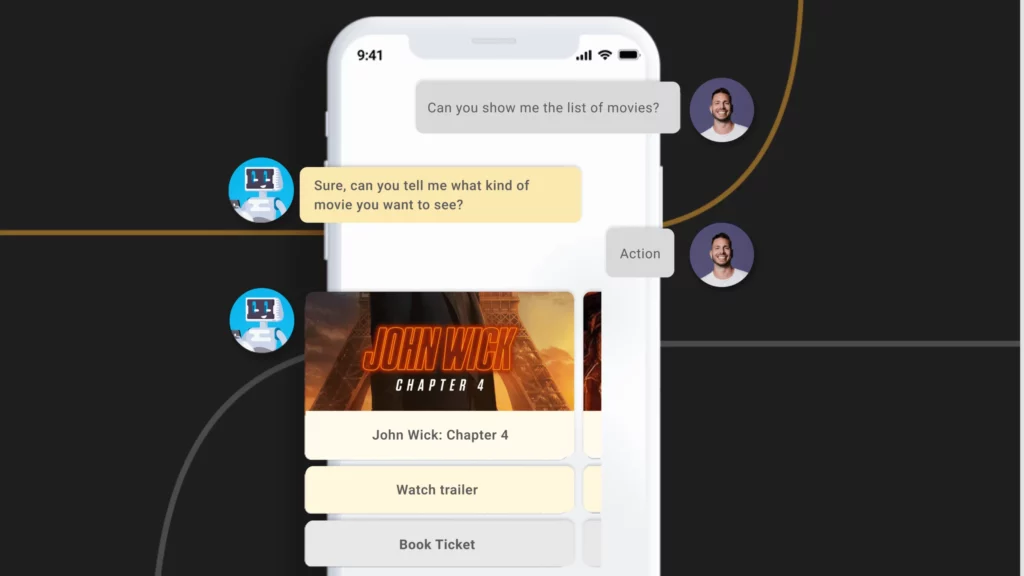
Conversational Design is a human-like-filter that’s layered on top of bots. Conveying information to the users fulfills the objective, but being conversational brings a natural touch and boosts user engagement.Conversational Design is a rapidly growing field as it mimics real-life conversations, allowing users to interact with technology in a more intuitive and personalized way, imagine a bot that can be just as silly, smart or humourous as the user. Conversational design makes the interaction seem organic, even if it’s just a system of networks. Though we know it’s a machine on the other end, tailoring these interactions for users makes it feel more human, natural and effortless.
Voice assistants are one of the most advanced implementations of conversational design. They can do everything from telling jokes, stories to informing us about the weather and much more. Experts predict that by 2024, there will be 8.4 billion digital voice assistants in use worldwide, outnumbering the global population. And by 2025, the transaction value of purchases made through these devices is expected to reach $164 billion!
So, it’s safe to say that our AI friends are here to stay.
Siri can perform various tasks such as making calls, sending messages, setting reminders, providing weather updates, searching for information on the internet, playing music, controlling smart home devices, and more. With advanced features such as voice recognition technology, it recognizes individual voices and provides customized responses based on individual preferences. Siri can also integrate with third-party apps to provide personalized and relevant responses to users. It can even entertain you by telling jokes, singing songs, and providing live sports updates.
A chatbot, on the other hand, is designed to understand and respond to a conversation in a natural, human-like manner. The chatbot is equipped with artificial intelligence and access to knowledge databases to become ‘contextually aware’. It can then pick up variations in a customer’s question and give relevant answers to numerous users simultaneously, thanks to the incredibly short reaction time.
The chatbot of a Cinema theater website lets visitors book tickets and view the trailer for the movie they want to watch – which helps them make a buying decision. The chatbot, in addition to providing support, also helps increase sales.
This application of chatbot isn’t just limited to movie theaters. Performers, sports teams, organizations, nonprofits, and anyone creating an event can use chatbots to smoothly sell tickets to their fans and audiences.

In the online world, you’ll find various conversational design examples. From ecommerce platforms to news websites, modern technological solutions are being adopted by all leading organizations, particularly when it comes to customer service and improving the user experience.
Duolingo helps users learn a language with small conversational exercises. The number of downloads for Duolingo has surpassed 500 million, which speaks for its good conversational design and ease of use.
Duolingo has made a partnership with Open AI. GPT-4 deepens the conversation on Duolingo. It will now offer English-speaking users AI-powered conversations in French or Spanish, and can use GPT-4 to explain the mistakes language learners have made. With the help of GPT4, they have introduced 2 new features – Role Play, an AI conversation partner, and Explain my Answer, which breaks down the rules when you make a mistake.

That’s the magic of conversational design! It’s all about creating a conversation that’s structured yet engaging between you and your digital friend. It typically involves creating a script of potential user interactions and identifying the intents and entities that the chatbot or voice assistant should recognize.
Conversational design and conversational UX are two related but distinct concepts in the field of conversational interfaces.Conversational design is all about creating a chatbot or voice assistant that can have natural and engaging conversations with users. It involves designing the conversation’s structure, content, and flow to meet users’ needs. On the other hand, conversational UX focuses on the overall experience of using a conversational interface. This means designing the conversation to meet user goals, understanding their preferences and limitations, and making the interface intuitive and enjoyable to use.
Be My Eyes uses GPT-4 to transform visual accessibility.
With the new visual input capability of GPT-4 (in research preview), Be My Eyes began developing a GPT-4 powered Virtual Volunteer™ within the Be My Eyes app that can generate the same level of context and understanding as a human volunteer.
It helps to analyze and respond to images that are submitted alongside prompts and answer questions or perform tasks based on those images. The advantage of using GPT4 is the ability to have a conversation and the greater degree of analytical prowess offered by the technology.
The demand for conversational design is expanding, and the underlying technologies are becoming more advanced. It will be interesting to see what the future holds and what new use cases and experiences we start to see as technology advances and more businesses use conversational design.
The opportunity for conversational design is immense. Users’ use of different platforms such as websites and mobile applications may be simplified due to this technical advancement, which can also help businesses increase the quality of their services. Customer support, marketing, and online information design can all be made more valuable with the implementation of conversational design. Conversational design involves creating engaging, natural, and interpersonal interaction between computers and users. Conversational designers must consider how users will engage with them, what the interface will say or do in response, and how to provide an intuitive and efficient user experience.
Here are some similar recommendations that could pique your interest.